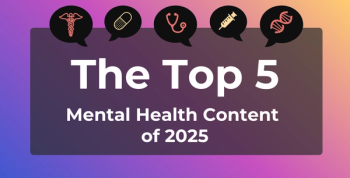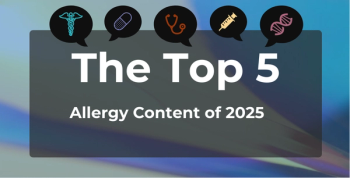
Prenatal PFAS Exposure Alters Infant Vaccine-Related Immune Cells
Key Takeaways
- Prenatal PFAS exposure is linked to altered Th cell distributions, with increased Th1, Th17, and Th22 cells at 12 months, indicating potential pro-inflammatory immune programming.
- The study highlights the importance of early monitoring and mitigation strategies to prevent lifelong diseases associated with PFAS exposure.
Prenatal exposure to per- and polyfluoroalkyl substances (PFAS), a class of persistent environmental pollutants, was linked to significant shifts in infant T helper cell development, raising concerns about long-term effects on vaccine response, immune regulation, and disease susceptibility.
As concern grows over the potential health impacts of widespread environmental contaminants, emerging research is beginning to shed light on how these exposures may disrupt early immune development. In a recent study
Meléndez et al investigated associations between maternal PFAS concentrations during pregnancy and infant T helper (Th) cell subtypes at birth and at 12 months. Their findings highlight distinct immunomodulatory effects that may have long-term implications for immune function and disease susceptibility.
“This is the first study to identify changes in specific immune cells that are in the process of developing at the time of PFAS exposure,” study author Kristin Scheible, MD, an associate professor of pediatrics and microbiology & immunology at University of Rochester Medical Center, said in a statement.2 “Identification of these particular cells and pathways opens up the potential for early monitoring or mitigation strategies for the effects of PFAS exposure, in order to prevent lifelong diseases.”
Study Background and Rationale
PFAS are synthetic chemicals used in a wide range of industrial and consumer products due to their resistance to heat, water, and oil. Their persistence in the environment and bioaccumulative properties have raised public health concerns. In recent years, studies have implicated PFAS exposure in various adverse health outcomes, including immunotoxicity. Experimental animal models have demonstrated that PFAS exposure can suppress antibody responses and alter T cell populations, but human data have been limited.1
The current study builds on prior research by examining Th cell distributions in relation to prenatal PFAS exposures in a US-based birth cohort. Th cells, a subset of CD4+ T cells, play a central role in orchestrating immune responses. Different Th cell lineages (eg, Th1, Th2, Th17, Treg) contribute to immune tolerance, pathogen defense, and inflammation. Disruptions in the balance of these lineages during early development could predispose individuals to allergic disease, autoimmunity, or infection.
Study Population and PFAS Exposure Assessment
The analysis drew upon data from 113 maternal-infant dyads enrolled in the UPSIDE-ECHO birth cohort, a racially and socioeconomically diverse population based in San Francisco. Maternal-infant dyad refers to the interconnected bond between a mother and her infant, which plays a foundational role in an infant’s development.3
Maternal serum samples were collected at a mean gestational age of 15.5 weeks, and PFAS concentrations were quantified using a validated liquid chromatography-tandem mass spectrometry method.1 The 8 PFAS compounds detected in over 75% of participants included both long-chain and short-chain substances, with perfluorooctane sulfonic acid (PFOS), perfluorohexane sulfonic acid (PFHxS), and perfluoroheptane sulfonic acid being among the most prevalent.
Due to high correlation among the PFAS congeners, the researchers used principal component analysis to reduce dimensionality. Two principal components (PCs) were retained for downstream analysis. PC1 was positively loaded with 6 legacy long-chain PFAS compounds, including PFOS, perfluorooctanoic acid, and PFHxS. PC2 was primarily driven by short-chain and emerging PFAS, such as PFHpA and nonafluoro-3,6-dioxaheptanoic acid.
Immune Phenotyping and Statistical Modeling
Cord blood and peripheral blood mononuclear cells were isolated at birth and at 12 months of age, respectively. Flow cytometry was used to characterize Th cell populations, defined by chemokine receptor expression patterns. Six nonoverlapping Th subtypes were quantified: Th1, Th2, Th9, Th17, Th22, and regulatory T cells. Proportions of each subtype were expressed relative to the total CD4+ T cell population.
The researchers used multivariable linear regression to estimate associations between PFAS exposure (via PCs) and the proportions of each Th subtype. Models were adjusted for potential confounders, including infant sex, gestational age at birth, mode of delivery, maternal age, race/ethnicity, education, parity, and season of sample collection. Sensitivity analyses were also conducted to test the robustness of the findings, including inverse probability of censoring weights (IPCW) to address potential selection bias from loss to follow-up.
Differential Associations Across Th Subtypes and Time Points
The study’s findings demonstrate that in utero exposure to legacy PFAS (captured by PC1) was associated with significant alterations in Th cell distributions, particularly at 12 months of age. At birth, higher PFAS exposure was linked to a decreased proportion of Th17 cells (β = −0.57; 95% CI, −1.01 to −0.13), a lineage implicated in mucosal immunity and inflammatory disorders. Although this association did not persist at 12 months, the investigators observed notable increases in the proportions of Th1 (β = 1.02; 95% CI, 0.06-1.97), Th17 (β = 0.75; 95% CI, 0.06-1.43), and Th22 (β = 0.72; 95% CI, 0.15-1.29) cells with higher PFAS exposure. These shifts suggest potential immune skewing toward pro-inflammatory phenotypes.
No consistent associations were observed between PFAS exposure and Th2, Th9, or Treg populations at either time point in the UPSIDE-ECHO analysis. However, findings suggest that elevated Th2 and Treg proportions may emerge alongside T follicular helper (Tfh) cell reductions, raising further concern about allergic inflammation, immune tolerance disruption, and altered vaccine responses.
Sex-Stratified and Sensitivity Analyses
Sex-stratified models revealed evidence of effect modification, particularly for the association between PC1 and Th1 cells at 12 months. Among males, PFAS exposure was associated with increased Th1 proportions (β = 1.85; 95% CI, 0.61-3.09), whereas no significant association was observed in females. This interaction was statistically significant and aligns with prior research indicating sex-specific immune responses to environmental exposures.
Additional sensitivity analyses, including the use of IPCW and restriction to term births, produced results consistent with the primary findings, reinforcing the validity of the observed associations.
Public Health Implications
The study provides novel longitudinal evidence that in utero exposure to PFAS may influence the trajectory of infant immune development, with implications for long-term health. The increase in Th1, Th17, and Th22 cells at 12 months suggests a potential shift toward pro-inflammatory immune programming, which could increase susceptibility to autoimmune or allergic conditions later in life. At the same time, the observed reduction in Th17 cells at birth may reflect early immune suppression that resolves or overcorrects by the first year.
While the study was not designed to assess clinical outcomes, the immunophenotypic changes documented here may serve as early biomarkers of PFAS-induced immunotoxicity. This is particularly important in light of ongoing regulatory and legal debates over PFAS contamination and cleanup efforts.
Additionally, depletion of Tfh cells may underlie previously observed links between elevated PFAS levels and reduced vaccine effectiveness, while increases in Th2 and Treg cells are associated with heightened risk of allergic inflammation or immune suppression; excess Th1 activity, in turn, may contribute to autoimmune conditions such as juvenile arthritis or type 1 diabetes.2
“The cells impacted by PFAS exposure play important roles in fighting infections and establishing long-term memory to vaccines,” said study first author Darline Castro Meléndez, PhD, a researcher in Scheible’s lab at the University of Rochester Medical Center. “An imbalance at a time when the immune system is learning how and when to respond can lead to a higher risk of recurrent infections with more severe symptoms that could carry on through their lifetime.”2
Minimizing PFAS Exposure and Future Directions
Although environmental exposures are often unavoidable, Meléndez et al recommend practical strategies to reduce contact with PFAS during critical periods of immune development. These include using water filters, avoiding damaged nonstick cookware, choosing stainless steel or cast iron alternatives, and storing food in glass or ceramic containers. Importantly, even mothers with relatively low PFAS blood levels exhibited significant infant immune alterations.1,2
The research team plans longer-term follow-up to assess whether T cell imbalances persist beyond infancy and contribute to increased rates of infection, allergy, or autoimmune disease. Additional goals include measuring PFAS levels directly in infants and uncovering the molecular pathways responsible for the observed immune disruptions.2
Study Limitations and Future Directions
Meléndez et al acknowledge several limitations. First, despite adjustment for numerous confounders, residual confounding is possible given the observational design. Second, although the cohort was diverse, the relatively small sample size (n = 113) limits generalizability and statistical power, especially for detecting interactions or rare outcomes. Third, the functional implications of the observed Th cell shifts remain unclear, as the study did not assess cytokine profiles, vaccine response, or clinical immune-related outcomes.1
Future studies with larger sample sizes and longer follow-up periods are needed to evaluate the persistence and clinical relevance of these immune alterations. Integration of multi-omic data—such as epigenomic or transcriptomic profiles—could further elucidate the mechanisms by which PFAS disrupt immune development. In addition, exploration of co-exposures and nutritional factors may clarify how PFAS interact with other early-life influences on the immune system.
Conclusions
Meléndez et al provided new evidence linking prenatal exposure to legacy PFAS with altered T helper cell development in infancy. These findings highlight a potential pathway by which environmental toxicants influence immune programming during a critical developmental window. While replication in larger and more diverse cohorts is warranted, the study underscores the need for public health action to mitigate PFAS exposure and protect vulnerable populations, especially during pregnancy and early childhood.
References
- Meléndez DC, Laniewski N, Jusko TA, et al. In utero per- and polyfluoroalkyl substances (PFAS) exposure and changes in infant T helper cell development among UPSIDE-ECHO cohort participants. Environ Health Perspect. Published online June 9, 2025. doi:10.1289/EHP16726
- Forever chemicals, lasting effects: prenatal PFAS exposure shapes baby immunity. News release. University of Rochester Medical Center. July 23, 2025. Accessed August 1, 2025.
https://urmcnewsroom.iprsoftware.com/story/forever-chemicals-lasting-effects-prenatal-pfas-exposure-shapes-baby-immunity - Tsang LPM, Ng DCC, Chan YH, Chen HY. Caring for the mother-child dyad as a family physician. Singapore Med J. 2019;60(10):497-501. doi:10.11622/smedj.2019128
Newsletter
Stay ahead of policy, cost, and value—subscribe to AJMC for expert insights at the intersection of clinical care and health economics.







































